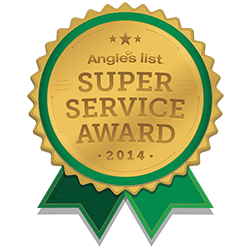A common complaint amongst my clients is too much clutter. So what’s causing this problem that seems to plague so many people and, more importantly, what’s the solution? Here’s my take on organization:
People often just toss things in their closets and garages without any sense of order or design. Before long, it all piles up, and it becomes impossible to find what you need — or even know what you have.
Closets and garages are often home to many items you just can’t part with because they hold sentimental value. Even though you rarely, if ever, look at them or never use them, emotional ties prevent you from giving them away.
With a new mind set, it’s pretty easy to donate old furniture and clothing to your favorite charity or shelter. Old books can be given to your local library, charity or shelter. You’ll gain space, get a tax donation, and be more socially and environmentally responsible. It’s a win-win situation for everyone!
Sentimental items such as photographs can be organized in albums, labeled in boxes, or selectively framed and turned into a fabulous family photo gallery on the walls of a stairwell, hallway, or family room. Or, try putting photo albums, scrapbooks, vacation mementos, and videos in an old armoire or a beautiful cabinet. But before you put anything away, label, label, label. A label machine can be purchased relatively inexpensively at any office supply store.
Holiday items take up space, but if properly organized, they will be easy to find when the time comes to bring them out of the closet. Clear plastic shoe boxes are great for ribbons. If you have multiple colors, round up all the reds and pinks, for example, and keep them in one box. In another shoe box, put your blues and purples. And so on. The boxes can be placed on a shelf of in a drawer or cupboard. Wrapping paper can be stored in large plastic bins easily found at stores such as Bed, Bath & Beyond or The Container Store. No room in the closet? Then slide them under the bed! Large containers can store wreaths, holiday lights, and miscellaneous bulky items. Again, label the box and put on a shelf in the garage or, if you have the room, in a closet. Most people on the West Coast don’t have attics or basements, but if you do, that’s another great place for your labeled storage boxes.
Laundry items such as bleach, detergents, and spot removers can be rounded up and put in an attractive basket or vintage tin bin and stored on a shelf. If it looks attractive, it becomes an accessory; if it’s messy, put it out of sight! Gardening supplies such as seeds, pots, tools, fertilizers and chemicals can be placed in a lockable cabinet in the garage, in the backyard, or on a balcony.
Just make sure it’s weather proof and isn’t rusty. Storage containers should look attractive if they’re in full view!
Organizing The Kitchen
Begin by discarding broken and obsolete small appliances and kitchen tools. Donate all those extra mugs and glasses, plastic containers with missing lids, and rarely, if ever, used dishes and cutlery. Every day dishes and glasses should be on shelves near the sink. Good china and crystal should be placed together and can be stored in special padded boxes. They can be purchased at Bed, Bath & Beyond, The Organization Store, or online. Place all serving platters and bowls together. Pots and pans usually work best under or near the stove. Small appliances such as mixers, blenders, juicers, and coffee pots should be kept together. Knives should be kept together in one drawer. Measuring cups, measuring spoons, toothpicks, corn holders and other small items can be stored in another drawer. All storage wraps should be kept together. All dish towels should be placed together in another drawer.
Organizing The Food Pantry
Just like a grocery store — Corral ‘em!
Store dry goods together: cereals, rices, pastas. Store tomato products together: spaghetti sauces, tomato sauces, tomato paste. Store condiments together: Catsups, mustards, relishes. Store oils together. Store vinegars together. Store canned fishes together: tuna, salmon, sardines. Store jams and peanut butter together.
Organizing For Entertaining
Create a party shelf with paper plates, plastic glasses, paper napkins, doilies, and disposable serving platters. Napkin rings can be stored in clear shoe boxes. Corral candles together. Tapered candles can be wrapped in tissue paper and inserted into empty cardboard paper towel rolls (two per roll). Vases should be grouped together. Glass marbles and sea shells used inside clear vases should be stored nearby.
Organizing Clothing
Clothing should be organized according to season and color. If you have an extra closet, keep your fall and winter clothes separated from spring and summer. If not, they can be divided by season within one closet OR everything can be organized together by color.
I always organize shirts and tops beginning with sleeveless, short sleeves, Iong sleeves. I begin at the far end of the closet with blouses and tops: first, whites, creams and beiges. Then continue the colors according to what you have. For example, greens, blues, purples, pinks, reds, browns, and, lastly blacks. And even within each color, go light to dark. Be sure to buy the appropriate hangers for your shirts. I like to use all white plastic hangers, unless an item requires a special grip. Bed, Bath & Beyond is a terrific resource for closet items.
Pants should be placed on pant hangers. Again, I start with whites and beiges, then progress through the color spectrum, ending with browns and blacks.
Shoes should also be organized by color. Again, start with light colors, working your way down to black. When I design closets for my clients, I build the shoe shelves extra deep (approximately 21”). By doing so, you can place a pair of shoes back to back and gain twice as much space. Boots can be placed in plastic containers on the floor of the closet.
Now your closet will be pleasant to look at and save you time searching for a certain item.
← Blog











